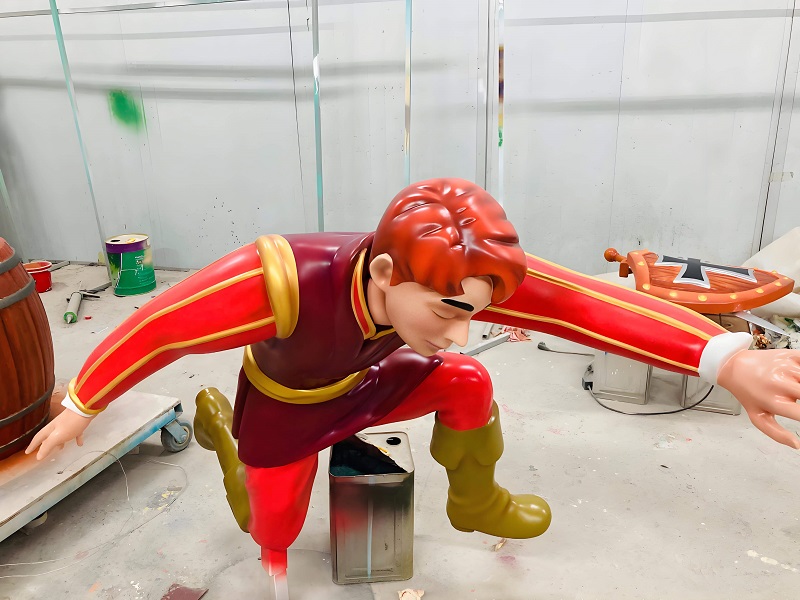- Fabricant de produits en fibre de verre, notamment de caillebotis et de toitures en fibre de verre.
- ventes@fiberglassgo.com
Fiberglass products significantly outperform traditional materials in terms of performance, applications, and durability. Characterized by their lightweight, cost-effectiveness, ease of molding, customization options, and vibrant color adaptability, fiberglass sculptures have gained increasing popularity among businesses and consumers, capturing a larger market share with promising prospects. They are widely used in over ten industries, including aerospace, railways, architecture, furniture, advertising displays, crafts, building materials and sanitary ware, yachts, sports equipment, and sanitation engineering, receiving widespread acclaim.

Fiberglass Sculpture Manufacturing Process
1. Design and Modeling
Begin with conceptualizing the sculpture's design and creating a detailed model.
Craft the model using materials like clay or foam to achieve the desired shape and proportions.
2. Mold Making
Apply a mold release agent to the model to facilitate easy removal of the mold.
Create the mold using materials such as silicone rubber or plaster, ensuring it captures all intricate details.
Construct a supporting shell around the mold to maintain its shape during the casting process.
3. Fiberglass Layup
Prepare fiberglass cloth or mat and mix the resin with the appropriate hardener.
Apply a layer of resin to the mold, then lay the fiberglass material into the mold, ensuring complete saturation.
Repeat the layering process to achieve the desired thickness, allowing each layer to cure before adding the next.
4. Demolding and Assembly
Once the fiberglass has cured, carefully remove the mold and supporting shell.
Assemble the individual parts of the sculpture, ensuring proper alignment and secure connections.
5. Surface Finishing
Sand the sculpture to remove any imperfections and achieve a smooth surface.
Apply a protective clear coat to enhance durability and finish.
6. Painting and Detailing
Paint the sculpture according to the design specifications, using high-quality, weather-resistant paints.
Add any additional details or textures to achieve the desired aesthetic effect.
To ensure the longevity and aesthetic appeal of fiberglass sculptures, regular maintenance is essential
UV Protection: Apply a UV-resistant protective coating annually to prevent color fading and surface degradation.
Cleaning: Use a mild soap and water solution to clean the sculpture, avoiding abrasive cleaners that may scratch the surface.
Inspection: Regularly inspect the sculpture for any signs of damage, such as cracks or chips, and repair them promptly to prevent further deterioration.
Storage: When not on display, store the sculpture in a dry, cool environment, away from direct sunlight and extreme temperatures.
Parc industriel de Qinbei, ville de Qinyang, province du Henan, Chine